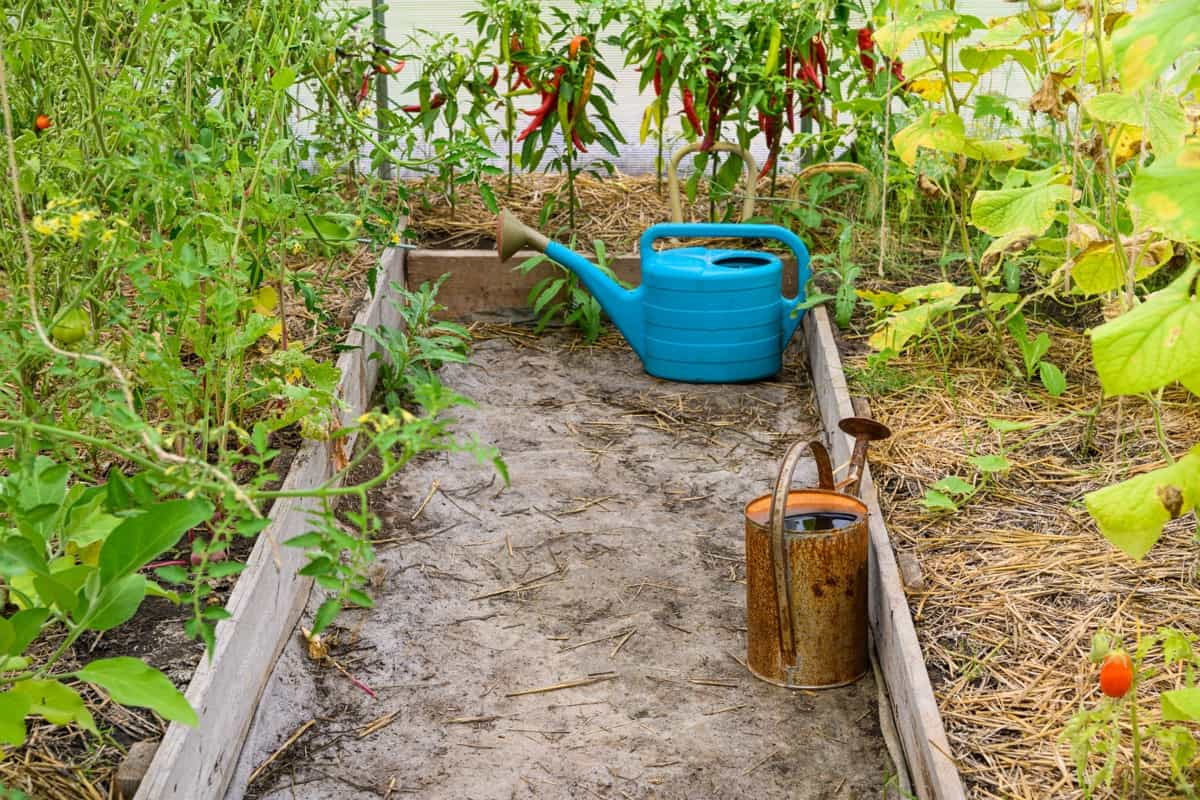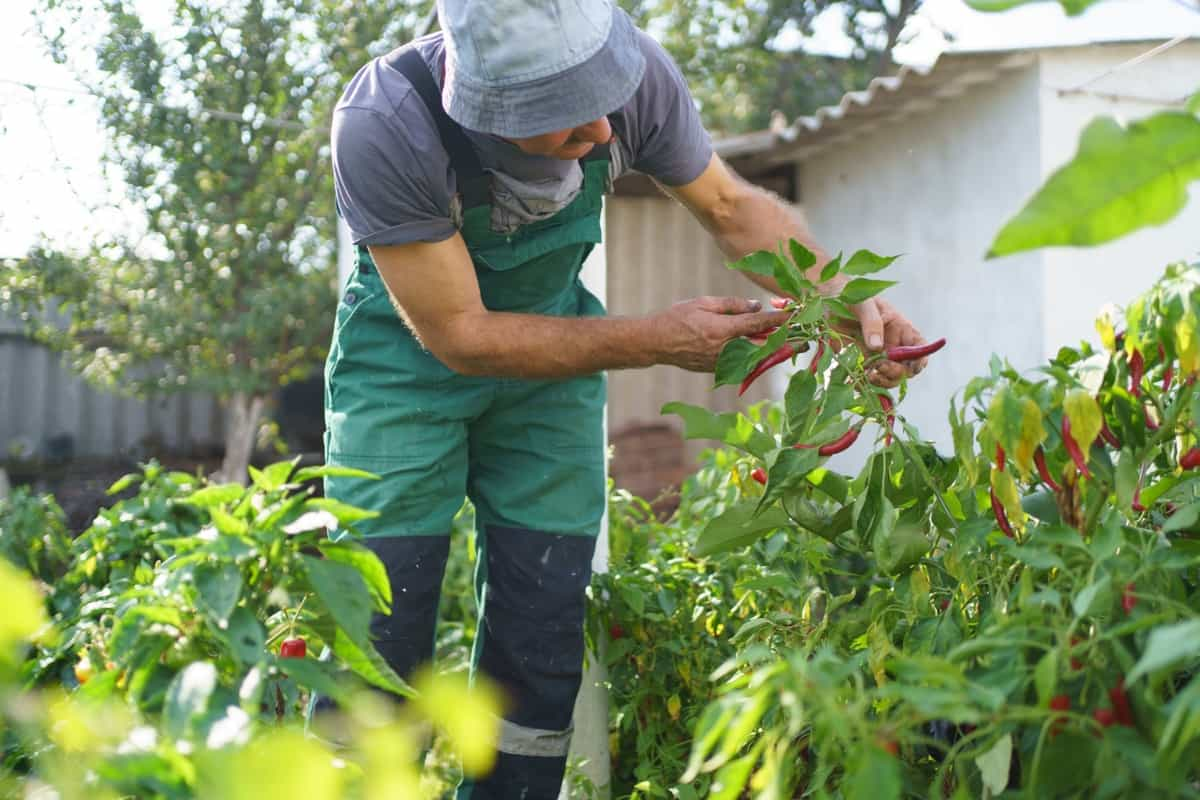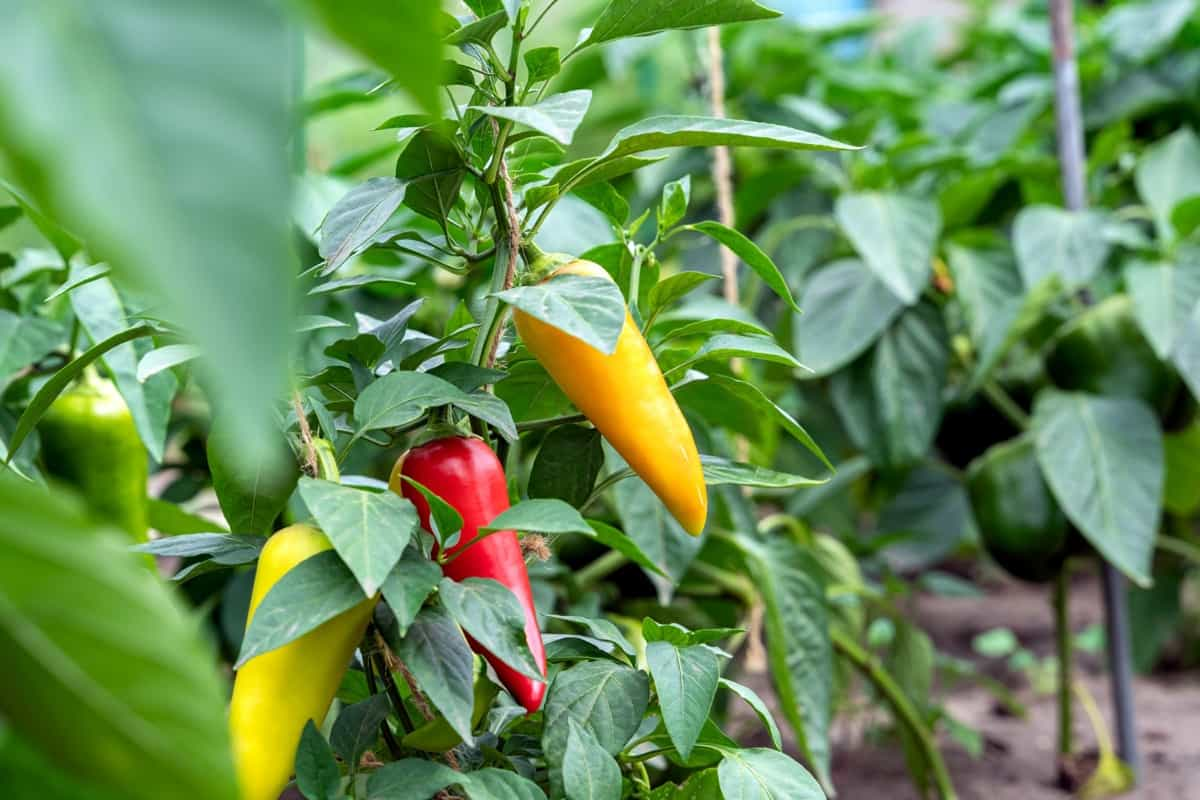An ancient gardening technique allows plants to thrive by having them grow side by side with select companions. One can improve growth, yield, and natural pest control by carefully pairing certain plants with others. This technique is particularly beneficial for peppers. By knowing what grows well with pepper, we can enhance its productivity, and thus, this technique, known as companion planting, becomes crucial for every gardener. Here we learn about the best companion plants for pepper, revealing their benefits and drawbacks and discussing bad companion plants for pepper.

Benefits of Companion Plants for Peppers in the Garden
Companion planting can significantly enhance the growth and yield of peppers. There are several pepper companion plant benefits that you should consider when planning your garden. These include boosting growth rates, improving yield, enhancing flavor, and providing natural pest control. When peppers are grown with certain plants, their growth rates can be dramatically enhanced.
Companion planting also can increase the yield of pepper plants, making your garden more productive. Furthermore, some companion plants can enhance the flavor of peppers, adding a new dimension to your culinary creations. Lastly, certain plants act as natural pest deterrents, reducing the need for chemical insecticides.
Best Companion Plants for Peppers to Deter Pests
Several plants work wonderfully as companions for pepper to deter pests. Some of the most effective ones are basil, onions, and marigold. These plants have strong scents that can mask the scent of the pepper plants, thereby deterring pests. They also attract beneficial insects and predators to common pepper pests. This natural pest control protects the peppers, ensuring they grow without hindrance. But it’s equally important to know what you should not plant next to pepper as plants like fennel and kohlrabi are known to attract harmful pests to peppers.
Pepper Companion Plants for Improved Pollination
Companion planting isn’t just for pest control; it also improves pollination. Certain flowering plants can attract bees, butterflies, and other pollinators to the garden. These pollinators then also visit the pepper plants, thus improving their pollination. Plants like borage, marigold, and nasturtium beautify the garden with their vibrant colors and play a significant role in attracting pollinators, ensuring that your peppers receive ample pollination for fruit production.
Companion Plants for Pepper in Containers
Container gardening presents unique challenges; having companion plants for pepper can help address these. Basil and parsley are great choices for this. These plants are relatively small and won’t compete with the pepper for space. Plus, they have the added benefit of deterring pests and attracting pollinators. Similarly, chives can be an excellent choice, offering a two-for-one deal of acting as a pest deterrent and enhancing the flavor of the peppers.
In case you missed it: How to Grow and Care for Organic Peppermint: Guide for Planting to Harvest

Companion Herbs for Peppers in Organic Gardening
Organic gardening emphasizes using natural methods to enhance plant growth and deter pests. Companion planting fits perfectly into this philosophy, particularly using companion herbs for peppers. Basil, parsley, and dill are among the best herbs to plant alongside peppers. These herbs enhance the growth and flavor of peppers, repel pests, and attract beneficial insects. With the right planning, you can turn your organic garden into a productive, pest-free paradise.
Flowering Companion Plants for Peppers to Attract Beneficial Insects
Beneficial insects play a critical role in maintaining the health of a garden. They pollinate plants, prey on harmful pests, and maintain a balance in the garden ecosystem. When grown alongside peppers, certain flowering plants can attract these beneficial insects. Marigolds, nasturtiums, and cosmos are beautiful and attract an array of beneficial insects such as bees, ladybugs, and butterflies. By incorporating these flowering companion plants in your pepper garden, you not only add visual appeal but also support a healthy, balanced ecosystem.
Balancing Sunlight and Shade for Companion Plants
Peppers love the sun and need at least 6-8 hours of sunlight daily to produce a good yield. Some pepper-friendly plants need less sun or could use some shade in the hottest hours. You can use taller plants, like tomatoes or corn, to provide filtered shade to lower-growing plants, like lettuce or spinach, which could be beneficial companions for peppers.
The taller plants can shield the lower ones from the harsh midday sun without significantly blocking their sunlight, thus creating a harmonious and productive balance in your garden ecosystem. This thoughtful arrangement can optimize available space and sunlight, making gardening even more fruitful.
Companion Vegetables for Peppers in Raised Beds
Raised beds are a common choice for growing peppers; certain companion vegetables can enhance their growth in this environment. Tomatoes, spinach, and cucumbers are good choices to grow alongside peppers. Tomatoes and peppers thrive in similar conditions and can benefit from each other’s presence. With its low growth habit, Spinach can provide ground cover, keeping the soil moist and cool. Cucumbers, being a vine, can be trained to grow vertically, saving space and ensuring all plants get enough sunlight.
In case you missed it: 10 Common Problems With Garden-Grown Peppers: Treatment and Solutions

Companion Plants for Peppers to Improve Soil Fertility
Some companion plants have the added benefit of improving soil fertility, further enhancing the growth of pepper plants. Beans and peas, among other legumes, are great at capturing nitrogen from the air and enriching the soil. This increases the nutrient content of the soil, providing peppers with the essential nutrients they need to grow. In addition, certain green manure crops like clover and buckwheat can be grown alongside peppers to improve soil structure and fertility.
Companion Plants Chart for Peppers in the Garden
A companion plants chart can significantly simplify the planning process for your pepper garden. Such a chart provides a visual representation of the plants that can be grown alongside peppers and their benefits and potential drawbacks. For instance, basil can be a fantastic companion, as it enhances growth and deters pests.
Parsley, another herb, is known for its ability to improve the flavor of peppers and attract beneficial insects. Marigold, a flowering plant, offers the dual advantage of deterring pests and attracting pollinators. Borage is popular for attracting pollinators and improving soil fertility, enhancing the overall health of your pepper plants.
Tomatoes are known for their mutual benefits when grown with peppers due to their similar growing conditions. Beans, a type of legume, can boost soil fertility and assist with the growth of pepper plants. With their strong scent, onions deter pests and enhance peppers’ growth. Understanding and utilizing this chart can equip you with the knowledge you need to optimize your pepper garden’s productivity through companion planting.
In case you missed it: 10 Best Hot Peppers to Grow in Your Garden: Types and Varieties

Conclusion
By carefully considering the plants you grow alongside your peppers, you can greatly enhance their growth and yield, making your garden more productive and rewarding. Remember that while these suggestions can improve the productivity of your pepper plants, every garden is unique. Trial and error is a part of gardening, and finding the best combinations for your specific circumstances may take some time. But by leveraging the power of companion planting, you’re already on the right path to a flourishing pepper garden.
- Ultimate Guide to Ossabaw Island Hog: Breeding, Raising, Diet, and Care
- Ultimate Guide to Juliana Pig: Raising Facts, Size, Diet, Care, and Lifespan
- Raising Lleyn Sheep: Disadvantages, Price, Uses, Characteristics, and Care
- Ultimate Guide to Meishan Pig: Breed Facts, Breeding, Raising, and Care
- Ultimate Guide to Teacup Pigs: Raising, Diet, Lifespan, Cost, and Care
- Guide to Raising Poll Dorset Sheep: Facts, Profile, Characteristics, Uses, and Care
- Ultimate Guide to Bighorn Sheep: Characteristics, Diet, Lifespan, Breeding, and Lifecycle
- Ultimate Guide to Raising Katahdin Sheep: Farming Facts, Breed Profile, Uses, and Care
- Ultimate Guide to Raising Oreo Cows: Belted Galloways Farming Facts, Profile, Uses, and Care
=